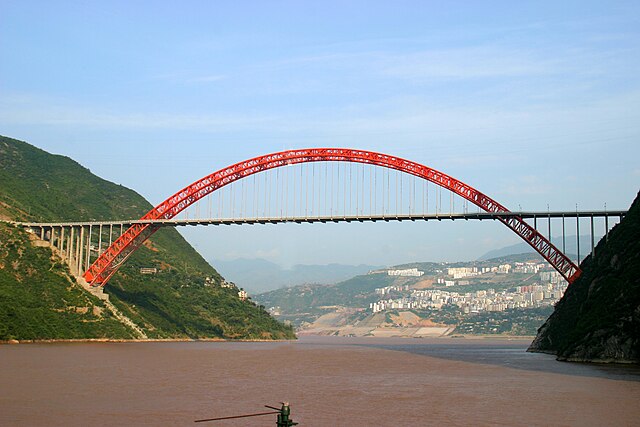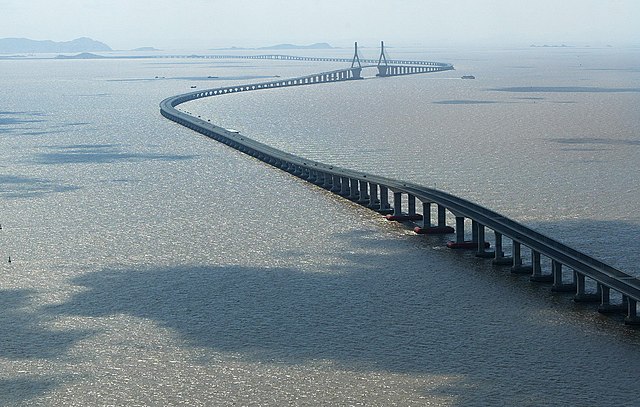Bridges and tunnels across the Yangtze River
The bridges and tunnels across the Yangtze River carry rail and road traffic across China's longest and largest river and form a vital part of the country's transportation infrastructure. The river bisects China proper from west to east, and every major north–south bound highway and railway must cross the Yangtze. Large urban centers along the river such as Chongqing, Wuhan, and Nanjing also have urban mass transit rail lines crossing the Yangtze.
The Wushan Yangtze River Bridge in the Three Gorges of Chongqing.
The Dashengguan Yangtze River Bridge in Nanjing
The Song dynasty Dongjin Bridge over the Gan River, a Yangtze tributary in Jiangxi.
The Iron Rainbow (Tiehong) Bridge is a contemporary of the Jinlong Bridge over the Chongjiang River, a Yangtze tributary near the Great Bend in Shigu Town, Yulong Naxi Autonomous County, Lijiang, Yunnan.
Transport in China has experienced major growth and expansion in recent years. Although China's transport system comprises a vast network of transport nodes across its huge territory, the nodes tend to concentrate in the more economically developed coastal areas and inland cities along major rivers. The physical state and comprehensiveness of China's transport infrastructure tend to vary widely by geography. While remote, rural areas still largely depend on non-mechanized means of transport, urban areas boast a wide variety of modern options, including a maglev system connecting the city center of Shanghai with Shanghai Pudong International Airport. Airports, roads, and railway construction will provide a massive employment boost in China over the next decade.
The Donghai Bridge is one of the longest bridges in the world.
Beijing Capital International Airport, one of the busiest airports in Asia.
The Transrapid Shanghai maglev train, with a top speed of 431 km/h (268 mph). It is the first and only commercial high-speed maglev line in the world.
Lhasa railway station








